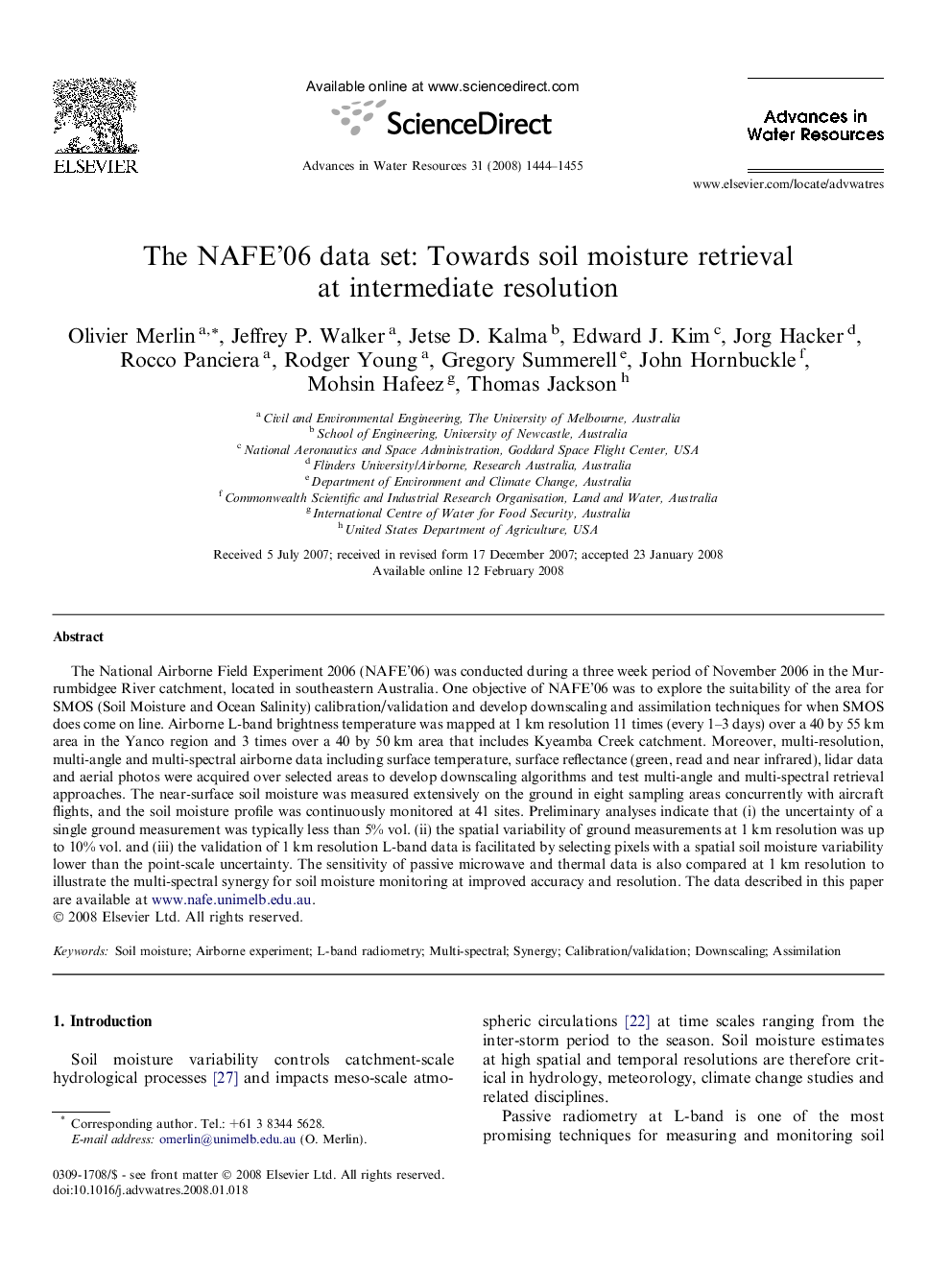| Article ID | Journal | Published Year | Pages | File Type |
|---|---|---|---|---|
| 4526316 | Advances in Water Resources | 2008 | 12 Pages |
The National Airborne Field Experiment 2006 (NAFE’06) was conducted during a three week period of November 2006 in the Murrumbidgee River catchment, located in southeastern Australia. One objective of NAFE’06 was to explore the suitability of the area for SMOS (Soil Moisture and Ocean Salinity) calibration/validation and develop downscaling and assimilation techniques for when SMOS does come on line. Airborne L-band brightness temperature was mapped at 1 km resolution 11 times (every 1–3 days) over a 40 by 55 km area in the Yanco region and 3 times over a 40 by 50 km area that includes Kyeamba Creek catchment. Moreover, multi-resolution, multi-angle and multi-spectral airborne data including surface temperature, surface reflectance (green, read and near infrared), lidar data and aerial photos were acquired over selected areas to develop downscaling algorithms and test multi-angle and multi-spectral retrieval approaches. The near-surface soil moisture was measured extensively on the ground in eight sampling areas concurrently with aircraft flights, and the soil moisture profile was continuously monitored at 41 sites. Preliminary analyses indicate that (i) the uncertainty of a single ground measurement was typically less than 5% vol. (ii) the spatial variability of ground measurements at 1 km resolution was up to 10% vol. and (iii) the validation of 1 km resolution L-band data is facilitated by selecting pixels with a spatial soil moisture variability lower than the point-scale uncertainty. The sensitivity of passive microwave and thermal data is also compared at 1 km resolution to illustrate the multi-spectral synergy for soil moisture monitoring at improved accuracy and resolution. The data described in this paper are available at www.nafe.unimelb.edu.au.
